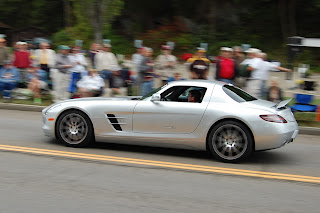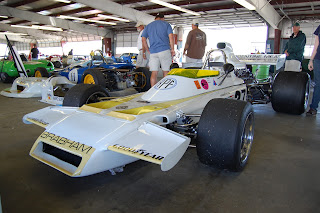 We got several correct guesses, including one reader from Hungary who recalled that his father owned one in the 1970s. "I don't have a lot of memories about the car", he wrote, "only that it was slow, loud, and we finally sold it for $50." Another reader sympathized with the owner of the blue car we featured who presumably threw the “horrid little thing” down a ditch in Sicily.
We got several correct guesses, including one reader from Hungary who recalled that his father owned one in the 1970s. "I don't have a lot of memories about the car", he wrote, "only that it was slow, loud, and we finally sold it for $50." Another reader sympathized with the owner of the blue car we featured who presumably threw the “horrid little thing” down a ditch in Sicily. The ZAZ brand was founded in 1958 by the USSR's government. The idea behind the brand was to create a cheap and easy to maintain people's car for the USSR. The first car in the Zaporozhets series was the ZAZ 965, intoduced in 1960. It was a small rear-engined two door car whose design was influenced by Fiat’s 600, though the two shared no components. It had a rear-mounted air-cooled V4 engine that had a displacement of 748cc, giving the little car a scant 23hp. Little changed until 1966 – hardly surprising given the USSR’s vast allocation of resources to nuclear weapons during this time period – when the engine was upgraded to 887cc (30hp). The new engine gave the 965 extra power and extra noise behind the rear seats but more importantly it was also used to power a new model: the ZAZ 966.
To develop the new car ZAZ again looked to the west for inspiration: the 966 looks like the thoroughly illegitimate offspring of an NSU Prinz and a Hillman Imp. It consequently looked much more modern than the 965 and boasted the particularity of having two heating systems, one that ran off of engine heat and one that was independent of it, providing heat without the engine on. Later in its career the 966 was available with a 40hp 1196cc and renamed the 966B.
The next update in the ZAZ saga brings us to our mystery car, the 1970 968. The 968 was essentially a 966 with the 1196cc pushed to 48hp, making the car almost freeway-worthy. The 968 would be the ultimate evolution of the Zaporozhets series and stayed in production until 1994 with minor aesthetic changes. Our mystery car is likely from the late 1970s: the 968 series was imported to Italy in 1977 but sales ended quickly as the model was too late. Italy left rear-engined, rear-wheel drive cars behind almost ten years before the 968's arrival on their market.
For those who found the traditional Zaporozhets sedans too bland, ZAZ built three interesting variants of the 966/968.
The first is the ZAZ 970, a Fiat 900T-esque vehicle based on the 968:

The second is a pickup version of the 968. Oddly enough it doesn't appear that the engine was mounted differently than in a sedan so one can imagine how much that compromises the potential cargo space:

Lastly, in a valiant but futile attempt to export the 966 around certain European markets ZAZ introduced the Yalta 1000, a slightly upmarket 966 with a metal grille, metal hubcaps and a 956cc Renault 8 engine. It was assembled in Belgium. (It is worth noting that the 965 was also exported to the west under the Yalta name, creating confusion between the two models.)

Below: a ZAZ 965A, the first ZAZ:
A ZAZ 966 V4 engine:
 Note: we did not take any of the above photos and do not take credit for them.
Note: we did not take any of the above photos and do not take credit for them.





 NSU was in trouble in the late 1960s.
NSU was in trouble in the late 1960s.






























